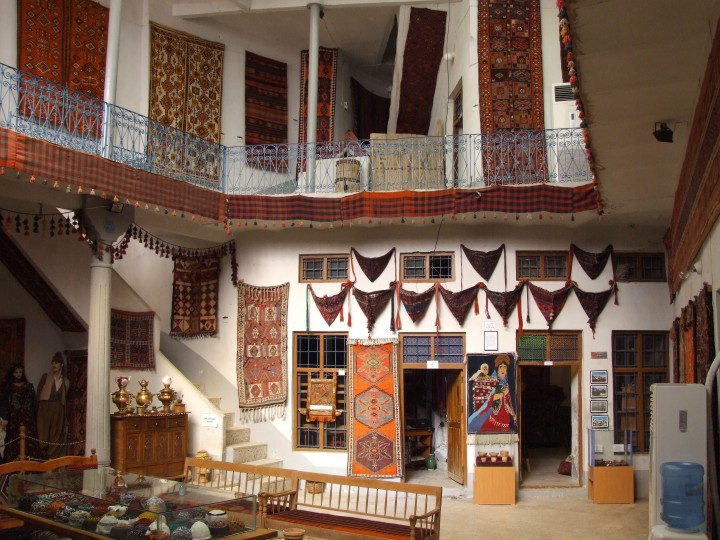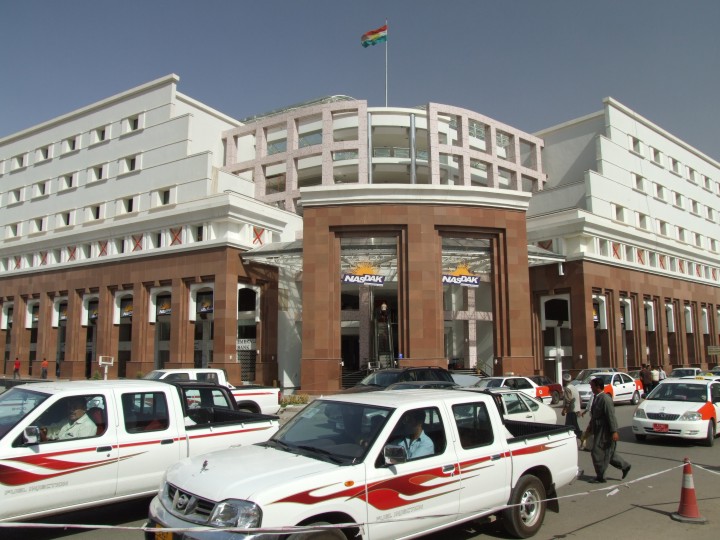
Overview
There are about 4 million Kurds live in northern Iraq
But most of them live by agriculture and husbandry. The Kurds in mountain area live a nomadic life. They raise sheep, goat, ox, horse, and they weave rug lumber, do leather works. Kurds in plain live by agriculture. They plant barley, wheat, corn rice, tobacco and cotton. After World War 1, the strict rules of national border limit the seasonal migration, which forced Kurds settled down, engaged in agriculture or other nontraditional jobs.

Erbil Citi del Textile Museum
Subsistence and Commercial Activities
The primary occupation of the Kurds of Transcaucasia in the nineteenth century and the first half of the twentieth was the vertical transhumance of livestock. Before departing for the pastures in the spring, the Kurds would form into obas, temporary and voluntary unions of several large families that lasted until their return to winter quarters in late fall. The fundamental objective in the creation of the oba was the assurance of adequate care and maintenance for the cattle. Obas were either of the jol type, in which members contributed equally toward the upkeep of the cattle, or the type in which one of the more prosperous flock owners accepted the sheep of the other members of the oba into his flock. The number of families forming an oba depended on the number of sheep and goats owned by each family. In addition to nomadic cattle rearing there was also cattle rearing in pastures. A number of tribes combined pasturing of livestock with dry-land agriculture (grains, tobacco).
Food
The Kurds have a distinctive national cuisine. From the beginning of spring the women stock up on produce (dairy products, meat, cereal, flour, vegetables) for the fall and winter. Semiprocessed dairy products are frequently used in many dishes, for example the refreshing beverage dau, from which various soups and curds are prepared. Curds can be fashioned into small balls (kyashk) that are dried under the burning sun. In winter, when the cows' milk yield drops and it is impossible to get dau, Kurds crumble a ball of kyashk, soak it overnight in warm water, and consume the thick liquid the following day. They also make various sorts of cheese (e.g., panire sari and a stringy cheese called panire reshi) Meat dishes include grilled mutton and Caucasian shashlik. Among the more common cereal dishes are porridges and soups prepared from processed grains (wheat, barley, and rice). Noodles (reshte) made from flour are prepared for storage.
Industrial Arts
Domestic crafts, particulary those directly associated with the processing of wool, were important in the economy of the Kurds. Kurdish women have long been famous for the manufacture of carpets (with and without nap) and felt and woolen items for clothing and daily life. The carpets are adorned with depictions deriving from folk legends, tales, and religious beliefs—particularly those of the Yezidis. At the end of the nineteenth century Erevan and Elisavetpol provinces, as well as Akhaltsikhe District in Tiflis Province Azerbaijan Transcaucasia the men were involved in working stone; carving gravestones in the shape of a sheep, horse, or lion.

Erbil New Construction

